Life has definitely returned to its busy former self. Travel requests, business meetings, and invitations to events flood my inbox. Still, nothing feels quite normal. Everyone awaits a fall viral spike. Sadly, it’s getting a little harder to maintain the space for contemplation and cooking that I cherished over the last few years. I’m trying to hold onto as much as I can, making time for prep throughout the day. I hope you will be able to continue cooking, too. We are in this together. Thank you, as always, for your support. —Mitchell
If you’ve been following along with Kitchen Sense, you already know that I hate to waste food. That’s not to say that Nate and I eat a ton of leftovers. Instead, my approach is usually to repurpose things, incorporating something leftover into something totally new. This can be as simple as saving the egg wash from glazing challahs to stir into the next morning’s scrambled eggs. Or as complicated as turning a completely tasteless and overcooked pasta from a restaurant meal into a delicious new entrée at home a few days later. I’ve done both in just the last week.
There are many compelling reasons to not waste food. There is the obvious humanitarian imperative of not wasting food when almost a billion people around the world go to bed hungry every day. There’s an environmental reason, which has to do both with the waste of resources that go into growing, making and transporting that food, as well as the greenhouse gasses produced by organic waste rotting in dumps. There’s an economic benefit, which is particularly resonant when we are talking about food access and high-value ingredients. And there’s the gastronomic reason, that is, the creative challenge of making something out of nothing, which the James Beard Foundation refers to as full-use cooking. I find the last particularly gratifying.
When it comes to using up things, the challenge in writing recipes is that no one ever has the same leftovers to use up as anyone else, or for that matter, the exact same leftovers twice. So, I’m always looking for flexible recipes or techniques that can be used as guidelines for whatever I might have. Hash is a favorite repository for cooked vegetables, meats, and other leftovers. So are Italian frittata and Spanish tortilla, into which I recently incorporated leftover French fries. Granola can take a lot of things in your kitchen that are asking to be used up. Fritters and croquettes are favorites, too.
I recently added barbecue sauce to this category of catch-all recipes, as it proves a good receptacle for bits of jam, various dipping sauces, sodas, vinegars, and such, which, with enough cumin, ginger, celery seed, paprika, and vinegar, turn into a delicious glaze for grilled meats.
And now I give you Fromage Fort.
I can’t claim to have invented this recipe, which translates to “strong cheese.” That honor goes to Jacques Pépin’s father, who apparently would never throw away any hard or moldy ends of cheese. Instead, he saved them in the drawer of the refrigerator until he had enough to make this powerful spread. A man after my own heart. I suspect it isn’t his, either. One can imagine that French people would need to do know what to do with old cheese, just as Italians have to find uses for leftover pasta. Jacques has shared this recipe many times in books and magazine articles over the years.
I love cheese. I buy it as souvenirs whenever I travel. This year alone I’ve brought back cheeses from Paris, London, Amsterdam, Houston, and Trumansburg, New York. During the pandemic, most of my walks included a stop in at least one cheese shop—Malt and Mold, Formaggio Kitchen, The French Cheese Board, Valley Shepherd, and Murray’s favorites among them. I can eat A LOT of cheese. But we can’t always consume all of the cheese I buy before it gets a little too hard, or too moldy, or both, to enjoy as is.
That is the time to make Fromage Fort.
Like a grown-up’s version of Cheese Whiz, Fromage Fort keeps forever in the fridge. You can use it as is. You can stir it into a macaroni and cheese to give it extra umpf. But I prefer my Fromage Fort broiled on thick-cut pieces of sourdough toast, like a French version of Welsh rarebit. I find it works best first to toast whatever bread I’m going to spread the cheese on, so you have a sturdy base that develops lightly charred edges as the cheese melts under the broiler, providing both gustatory contrast and visual appeal.
I Can Eat That?
There really is no cheese too old, too stinky, too ammoniacal, or too moldy to include in Fromage Fort, provided such bold flavor is to you taste (it will mellow when melted). You can use cow, goat, or sheep, for starters, blues, natural rinds, cheeses that are fresh and soft, too. I’ve added quark and sour cream in the past. Remove all artificial rinds and anything natural you think might be too hard to grind down. Scrape off any questionable mold, green or black, but don’t worry too much about friendly mold, fuzzy and white. Adjust the other ingredients in the recipe in proportion to how much cheese you have. Sometimes I add mustard or Worcestershire, but neither is necessary if your cheese is already strong.
I once hosted a cocktail party for my World’s 50 Best colleagues and chefs when the ceremony was held in New York City in 2016. Large slabs of broiled Fromage Fort toasts cut into wedges were one of the hors d’oeuvres I prepared. When Daniel Humm, the Swiss chef at the helm of Eleven Madison Park—which would rise to the top spot on the world’s best list the following year—walked into our apartment, I heard him say, “It smells like Switzerland in here.” High praise, indeed.

RECIPE: Fromage Fort
(Yields about 1 pint)
1 pound assorted cheese remainders, from cow, goat, or sheep’s milk cheeses, such as Brie, Camembert, Comté, cheddar, Manchego, mozzarella, Swiss, blue, chèvre, or what have you
3 to 4 garlic cloves, peeled
1/2 cup dry white wine
½ to 1 teaspoon freshly ground black pepper
1 teaspoon Dijon mustard (optional), see here
A few dashes Worcestershire sauce (optional)
Trim the cheeses, removing any unnatural rinds, any dried patches you think are too hard to grind down, and any bits of green or black mold. Cut the cheese into small chunks. Weigh what you’ve got left and adjust the quantities of the other ingredients proportionately.
Into the bowl of a food processor fitted with a metal chopping blade, place the garlic and pulse until finely chopped. Add the chunks of cheese, white wine, black pepper, mustard, if using, and Worcestershire, if using. Pulse the processor to begin to break down the cheese and continue until it begins to form a paste. Scrape down the sides, and then let the machine run to get mixture as smooth as possible. A few stubborn small chunks are okay, as they will melt when the past is heated. Transfer the mixture to an airtight container and refrigerate almost indefinitely.
RECIPE: Cheese Toasts
3 or 4 thick slices sourdough bread
Unsalted butter, at room temperature (optional)
Fromage Fort
Freshly ground black pepper
Line a baking tray with aluminum foil. Adjust your oven rack about 8 inches or so away from your broiling element and preheat the broiler.
Lightly toast the bread. If you like, you can lightly butter the toast for extra richness. Lay the toast out on the prepared pan. Spread a decent amount of Fromage Fort on the toast right to the edges. Don’t worry if there are a few small bits of cheese visible. Set the toast under the broiler and watch carefully as the cheese melts. Do not leave the broiler. The edges of the bread have a tendency to burn before the cheese is full melted. I like to stope when the cheese has melted and lightly browned. Rotate the pan for even doneness. Remove from the oven. Grind some pepper on top. If serving as hors d’oeuvres, cut into bite-size pieces.
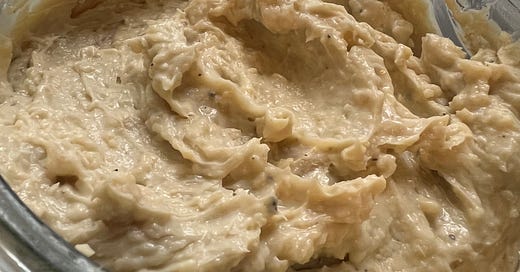


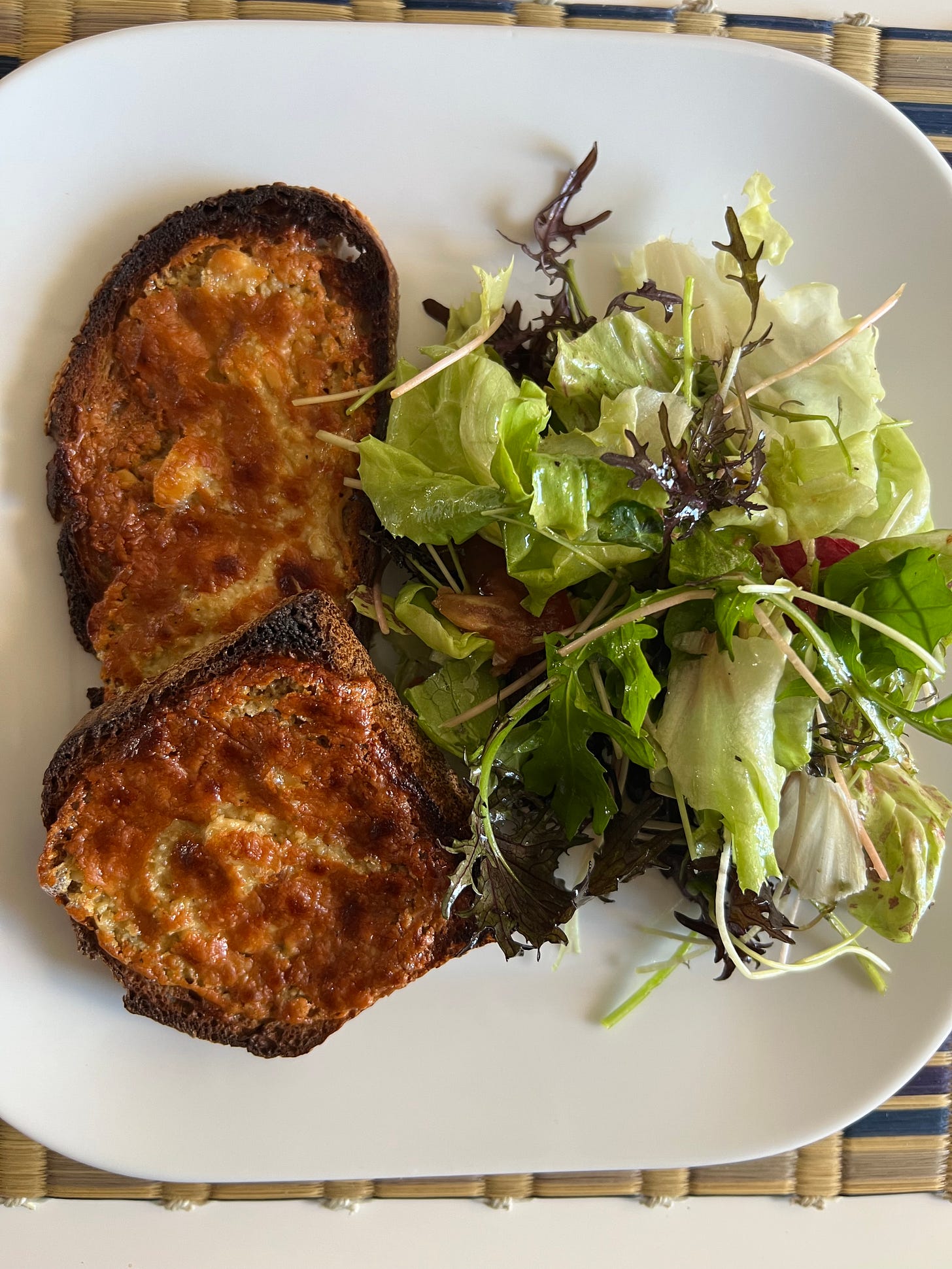
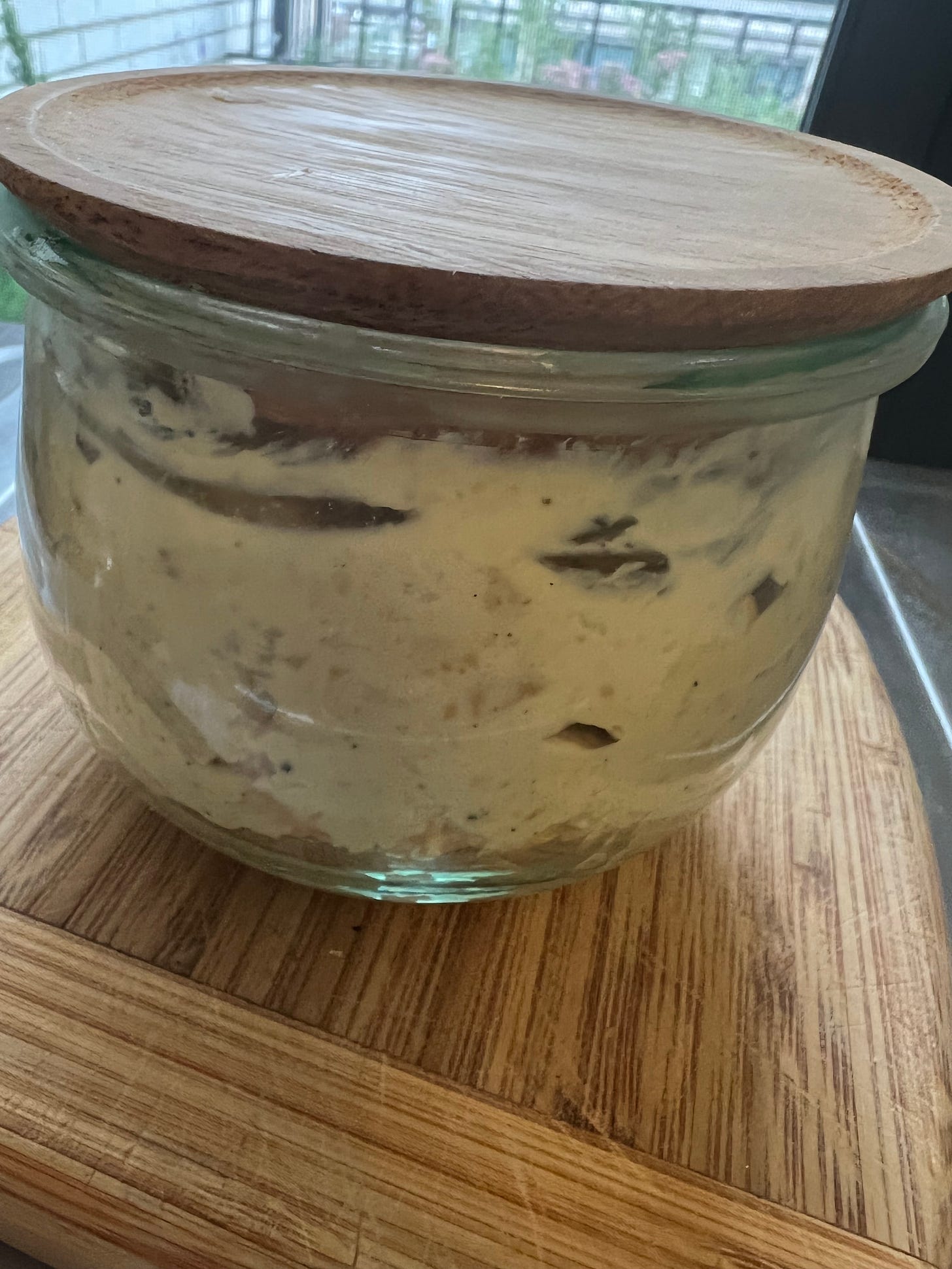
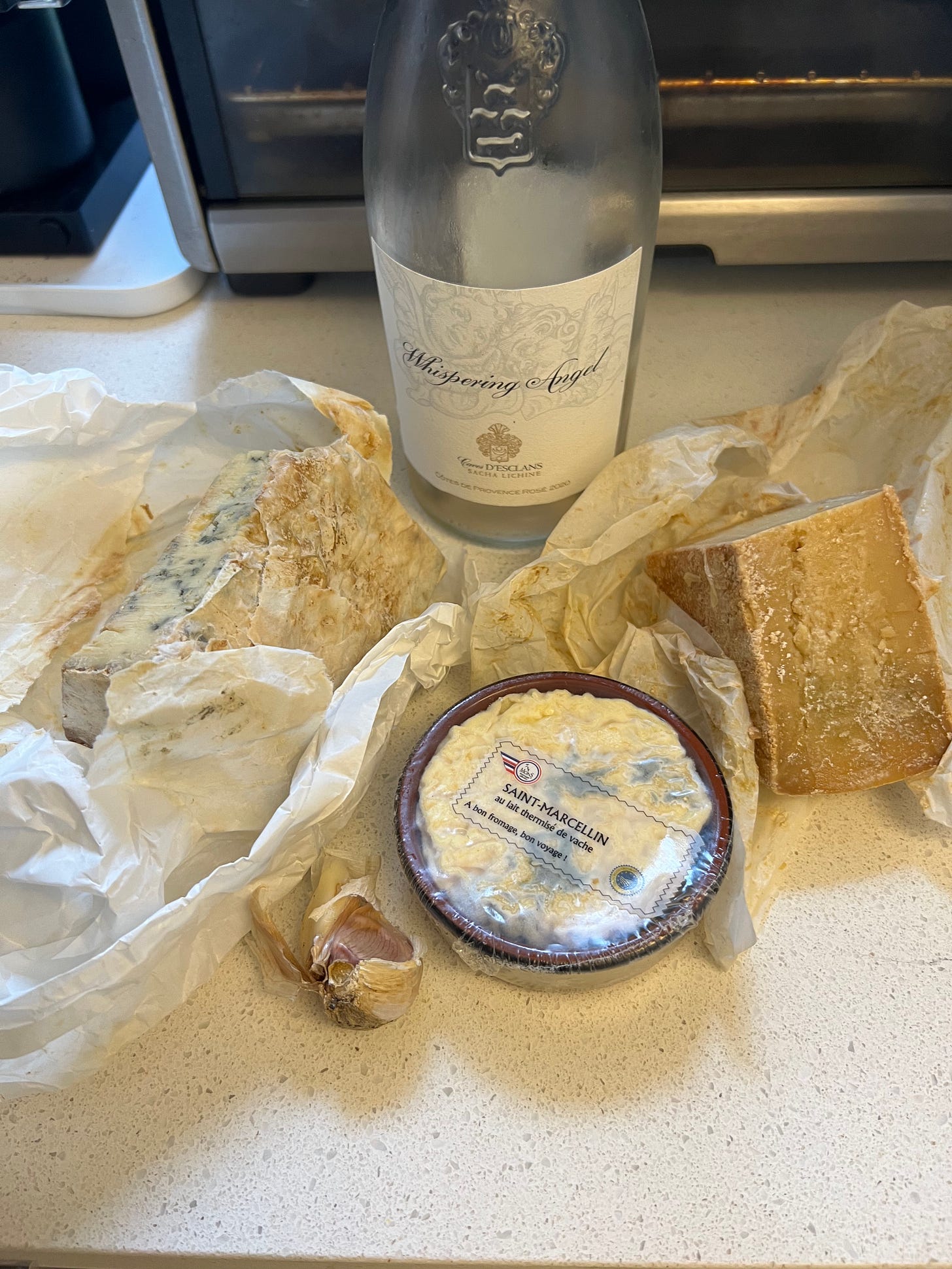
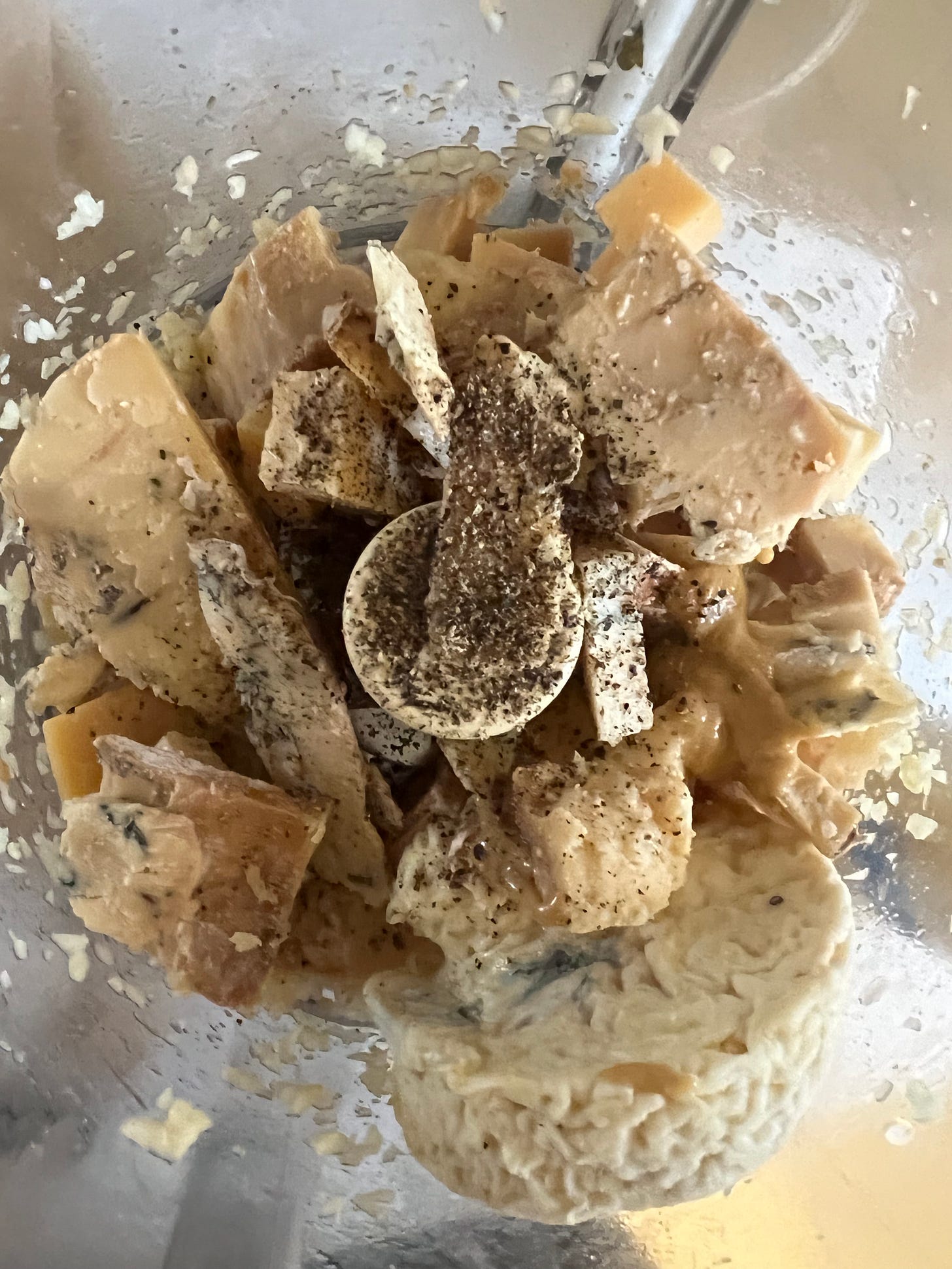

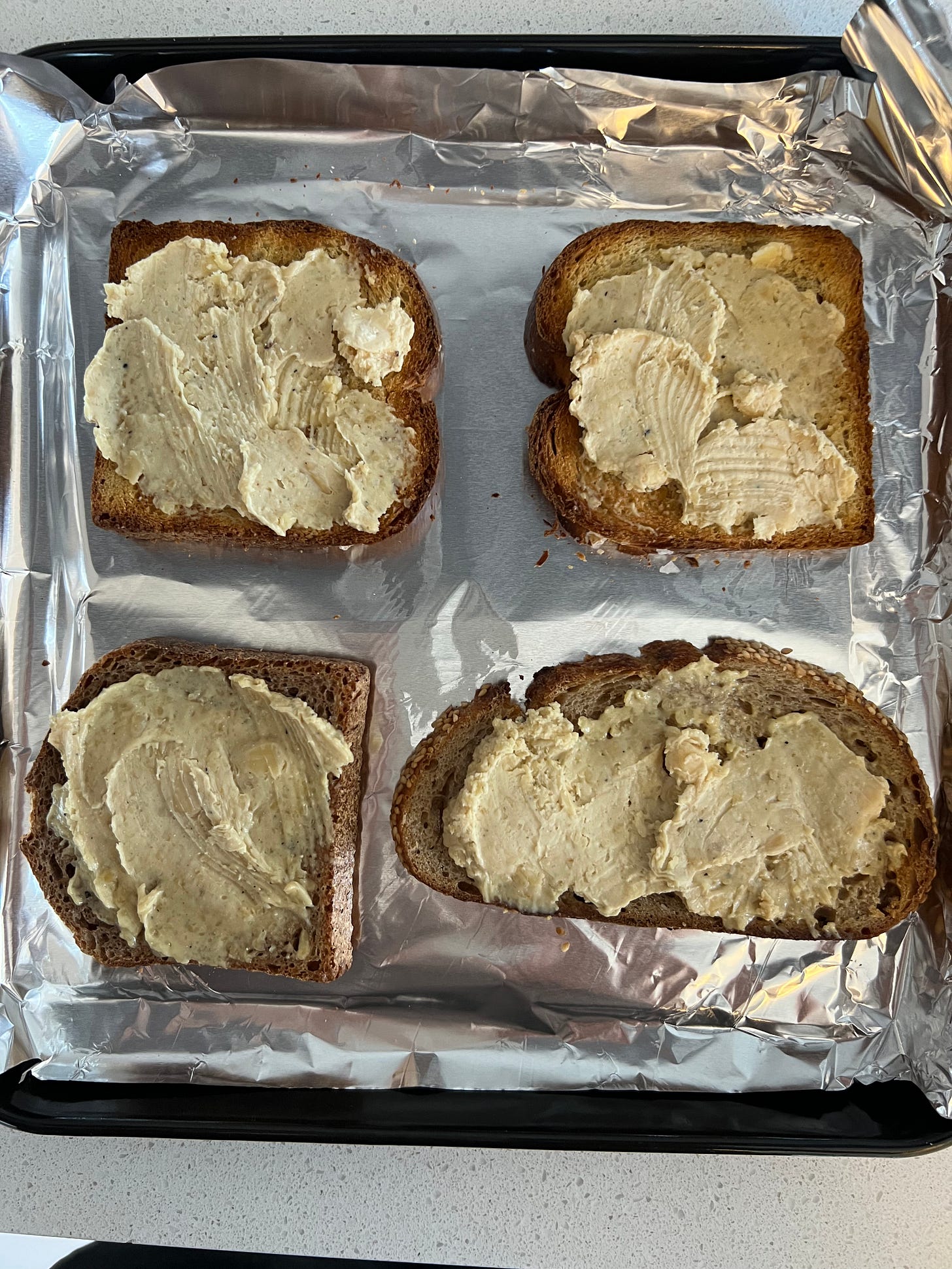
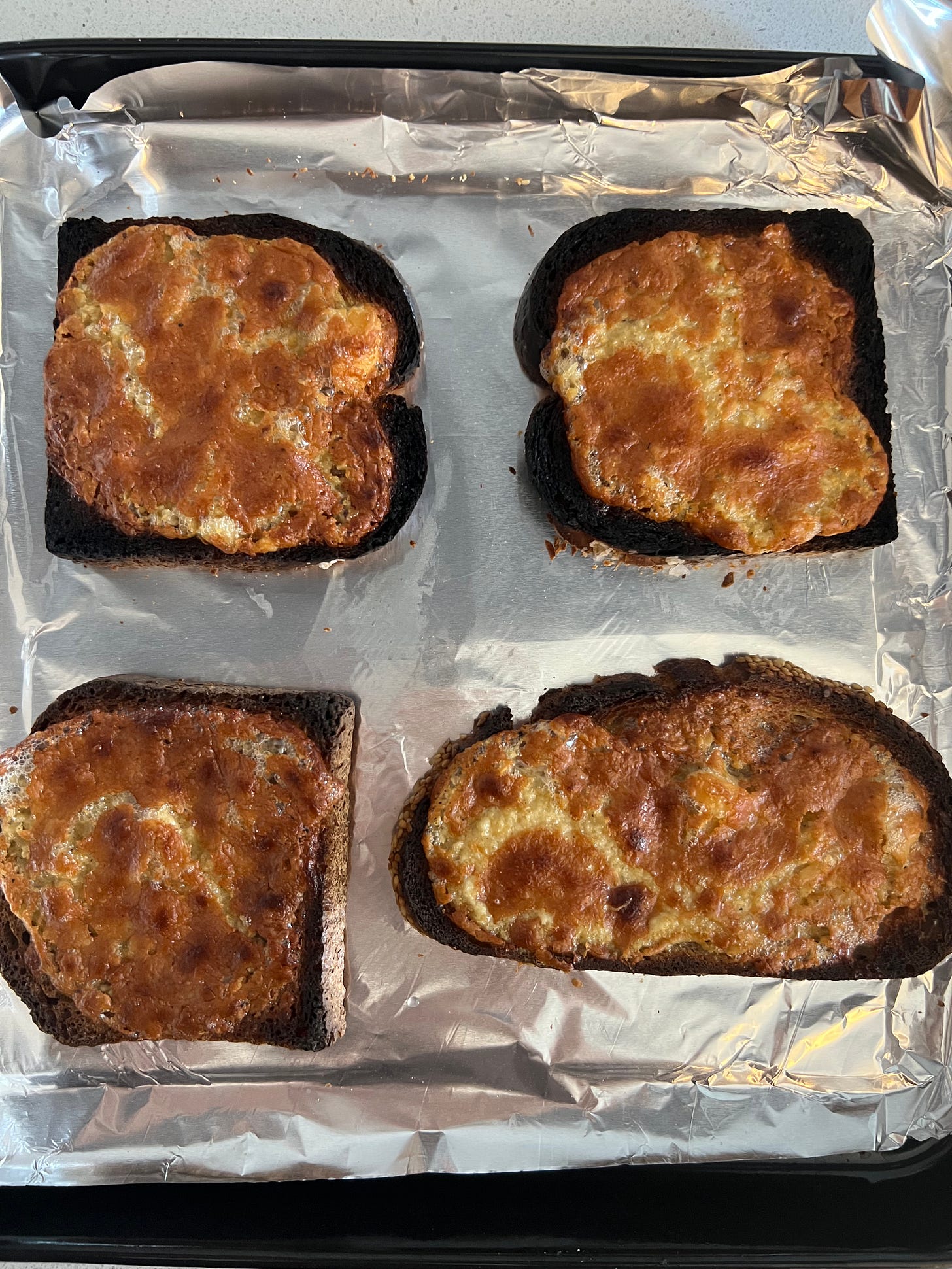
Want! But I want everything you make. And I might be able to pull this one off! I wish, like you, I had the magic hands and brain to turn leftovers (egg wash!) into something special. It's a great skill and, no doubt, it would prevent me from overbuying. But it's not that easy (class, please)....It's ridiculous. I admit it, I don't eat a quarter of what I buy. Shame on me. I'm very taken with the beauty of food at the farmers market. And my care for the health and wealth of the farmers runs deep and gets in the way of sanity. I want to help all of them. After all, they are the people that got me through the pandemic. So, it's a slippery slope for me. Jewish guilt (am I allowed to say that?).